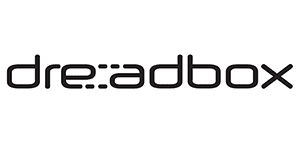
In 2012 the music community welcomed Dreadbox brand which took its own niche quickly and surely, also known as Dreadbox effects&synthesizers. The company was founded in Greece, in Athens, and immediately began production and release of analog pedals and synthesizers. Yannis Diakoumakos was the founder of the brand. After graduating from the university and getting carried away with music, especially playing bass guitar, the young man decided to improve his equipment himself – later this skills shaped the basis of Dreadbox. Thanks to his father, an engineer, Yannis had many books which eventually helped him develop and create his own unique musical equipment.
We should note that the company's music products are assembled manually using high-quality materials and stencils. All the circuits are entirely analog, and designed using Surface Mounting Technology (Through Hole Components), which was inherent in earlier vintage synthesizers of the 70s.
Since 2014 the Murmux brand series has been presented on the music market. The series incorporated three models: Initiate, Semi-modular and a pedal version. The devices are hand-made and have their own unique design in retro style with a body made of thick quality tweetstoff plastic. The first instrument of the series was presented as a fully analog manually assembled monophonic synthesizer. The unit included an advanced MIDI implementation with CV/Gate outputs providing the ability of MIDI keyboard interaction as well as convenient connection to other equipment. Despite its small size the instrument can boast of its rich bass sound and incredible ease of control which made Murmux Initiate one of the most intuitive analog instruments. It comprises only 2 VCO (+ suboctave saw), 24 dB resonant low pass filter, LFO generating triangle, VCA, filter envelope and amplifier and input for external audio source. Among features we should pay attention to the fact that it works only with 12VAC 2A, offers the ability to pass expression pedal through the filter, ensures MIDI or analog keyboard control, has mono audio input and output. The semi-modular version includes specification featured in Initiate unit, but has a bigger power, bigger dimensions and is aimed at professional musicians. The pedal version of the series has become a real eye catcher thanks to its outstanding design and body made of natural wood. However the model is produced as a limited series (only 12 units per year).
Murmux V2 caused the real excitement in 2016. It’s the successor of the semi-modular version and goes to the market in a limited number. Murmux V2 - paraphonic analog synthesizer. The first Murmux series instruments offered three models - this instrument combined everything what all the previous ones could do. Among the key features of V2 there are: 3 independent oscillators + sab, combination of high pass and low pass filters as well as a drive control. These features turn convincing enough bass and lead the previous Murmux possessed into truly cutting and punchy voices. The Wooden Enclosure is also hand-made (Black Science put their hands onto design). In addition to the above mentioned qualities the module offers 50 patch points, one "hyper" VCO (generating 6 kinds of the sawtooth wave), a white noise generator, a classic 12db but an improved Murmux filter, 2 ADSR and one AD, 3 LFO, 2 VCA (one patchable), OTA Drive circuit, hybrid voltage-controlled delay, sample&hold, 2 passive attenuators, 2x2 in 1 or 1x4 in 1 mixer, as well as audio inputs and outputs at different stages. All in all Dreadbox made 50 Murmux units in 2016 pushing people get in line to preorder them first. Dreadbox should definitely make more.
In 2015 the brand released a few new designs. The first one was analog synthesizer Erebus, personifying eternal darkness in Greek mythology and one of the most affordable paraphonic analog synthesizers on the market released in two versions (perhaps, back then it was the first known Greek synthesizer). Erebus included two VCOs with individual control (which allowed to play or sequence two different pitches which then would be put through the filter and amplifier sections), two ADSR envelope generators and AR for the amplifier, an advanced MIDI support, unison function, CV inputs and outputs, 12dB low-pass resonant filter, a VC LFO (triangle/square) with depth control, a VC delay/echo, and a paraphonic CV/Gate output which made it possible to turn monophonic devices into paraphonic ones (even allowing a combination of two monosynths). Thus Erebus launched a powerful monosynth (sporting a duophonic mode) and an elaborated delay. Its patchbay is especially friendly to MS20 Mini and any "euro" device. Its inertly evolving (in a noble kind of manner) low-frequency oscillator and ear-enchanting filter are great for creating solo and bass parts, but the power of Erebus lies in the psychedelic potential - a stream of slightly frustrated sawtooth waves and drowning transitions of the resonant filter in the cloud of echo oscillations, of course, have nothing to do with Hi-Fi but the result is impressive.
Dreadbox didn’t stop here and soon after the success of Erebus pleased the fans with the release of a new bass module Hades. Dreadbox Hades is a full analogue hand-crafted synthesizer with excellent thick sound, ideal for creating new bass sequence patches or analog effects. Hades has 1 VCO with two sub-octaves (which gives a total of 3 voices), pulse-width and glide control, an 18 dB low-pass resonant filter, an OTA Distortion circuit, and an OTA-based amplifier, 2 envelopes (punchy and patchable AD/RS + AR, already routed to VCA), LFO with triangle wave, 8 patch points, 5 MIDI octaves from C0 to C5 and unlimited through CV/Gate. The module is compatible with other Eurorack devices so it’s easy to expand its possibilities.
Professional and quality instruments made by Dreadbox continue to win fans. The demand for such outstanding hand-soldered musical equipment is several times higher than the offer, the number of pre-orders is inexorably growing which proves: Dreadbox is entering its bright epoch.


